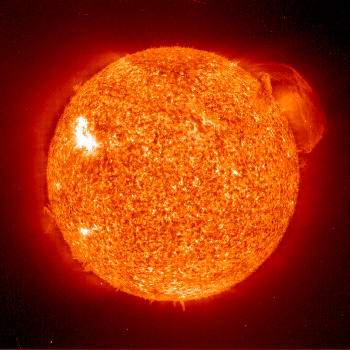Archive for the ‘Energy’ Category
The Liquid Fluoride Thorium Reactor: What Fusion Wanted To Be
Google Tech Talks
November 18, 2008
ABSTRACT
Electrical power is, and will increasingly become, the desired form of energy for its convenience, safety, flexibility and applicability. Even future transportation embraces electric cars, trains, and chemical fuel production (jet fuel, hydrogen, etc.) based upon an abundant electrical supply. Although existing energy sources can and should be expanded where practical, no one source has shown to be practical to rapidly fulfill the world’s energy requirements effectively. Presently there is an existing source of energy ideally suited to electrical energy production that is not being exploited anywhere in the world today, although its existence and practicality has been know since the earliest days of nuclear science. Thorium is the third source of fission energy and the LFTR is the idealized mechanism to turn this resource into electrical energy. Enough safe, clean energy, globally sustainable for 1000’s of years at US standards.
This talk is aimed at explaining this thorium energy resource from fundamental physics to today’s practical applications. The presentation is sufficient for the non-scientist to grasp the whole subject, but will be intriguing to even classically trained nuclear engineers. By providing the historical context in which the technology was discovered and later developed into a power reactor, the story of thorium’s disappearance as an energy source is revealed. But times have changed, and today, thorium energy can be safely exploited in a completely new form of nuclear reactor.
The LFTR is unique, having a hot liquid core thus eliminating fuel fabrication costs and the need for a large reactor. It cannot have a nuclear meltdown and is so safe that typical control rods are not required at all. This design topples all the conventional arguments against conventional energy sources in such areas as:
- Waste Production
- Safety
- Proliferation
- Capital Costs and Location
- Environmental Impact
- Social Acceptance
- Flexibility
- Grid Infrastructure
- Efficiency
Should America take this step toward a New Era in Nuclear Energy Production? Hear the case for “The Electricity Rock” and then decide.
Speaker: Dr. Joe Bonometti
Dr. Bonometti has extensive engineering experience in the government, within industry, and in academia over a 25-year career. Recently completing an assignment as the NASA Chair Professor at the Naval Post graduate School, he supported a ship design study that utilized advanced nuclear power derived from thorium. Working at NASA for ten years as a technology manager, lead systems engineer, nuclear specialist, and propulsion researcher, he lead several NASA tiger teams in evaluating the Nuclear System Initiatives fission demonstration vehicle and missions. He managed the Emerging Propulsion Technology Area for in-space systems, the Marshall Air Launch team, as well as a variety of other power and propulsion assignments and is now the Lead Systems Engineer for the Ares I-Y flight. After earning a Doctorate degree in Mechanical Engineering from University of Alabama in Huntsville, he spent several years as a Research Scientist & Senior Research Engineer at the UAH Propulsion Research Center where he served as a Principal Investigator and manager for the Solar Thermal Laboratory. He has worked as a Senior Mechanical Designer at Pratt & Whitney supporting aircraft engine manufacturing and at the Lawrence Livermore National Laboratory within the laser fusion program. A graduate from the United States Military Academy, at West Point, where he studied nuclear physics and engineering, Dr. Bonometti served as an officer in the United States Army Corps of Engineers; both in combat and district engineering management assignments. He is a Registered Professional Engineer in the State of Virginia, and has authored numerous aerospace technical publications, particularly propulsion and space systems technologies. His technical expertise includes nuclear engineering, specialized mechanical & materials research, space plasmas & propulsion, thermodynamics, heat transfer, and space systems engineering.
This Google Tech Talk was hosted by Boris Debic.
A Solar Grand Plan
If the U.S. makes a massive switch from coal, oil, natural gas and nuclear power plants to solar power plants, it is possible that 69 percent of the U.S.’s electricity and 35 percent of its total energy could be solar-powered by 2050.
This would require the creation of a vast region of photovoltaic cells in the Southwest. It could operate at night as well as during the day; excess daytime energy can be used to compress air stored in underground caverns, which would be used as an energy source during nighttime hours.
In order to work, the plan would also need a new direct-current power transmission system to deliver solar electricity across the country, and would require $420 billion in subsidies from 2011 to 2050.
However, despite the fact that many are skeptical about our ability to produce photovoltaic cells and modules that can provide electricity at a low enough cost to be truly competitive, I personally believe we’ll get there. And probably A LOT sooner than projected.
For example, Nanosolar has already been able to reduce the cost of production by 90 percent, slashing the cost from $3 per watt to 30 cents per watt. They won the Popular Science Innovation of 2007 award for their paint-layer-thin solar coating, which is in production as of 2008. Read the rest of this entry »

